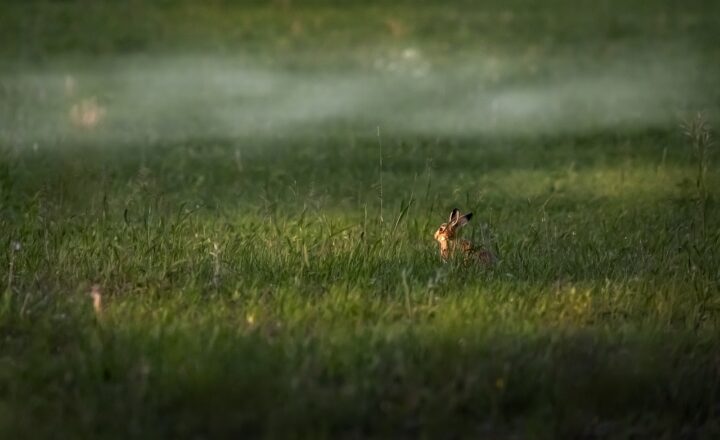
When we think of the animal kingdom, familiar creatures like lions, elephants, and whales often come to mind. However, the world is teeming with fantastic and bizarre species that remain hidden from everyday life. These animals, sometimes described as rare or elusive, challenge our understanding of biodiversity and showcase the wonders of evolution.
In this article, we embark on a journey to discover some of the most incredible animals you probably never knew existed, exploring their unique adaptations, habitats, and the paramount roles they play in their ecosystems.
1. The Axolotl: Nature’s Ever-young Creature
One of the most intriguing creatures is the axolotl, a type of salamander that never undergoes metamorphosis. While most amphibians transition from water to land, the axolotl retains its larval features throughout its life, a phenomenon known as neoteny.
This adorable creature, often referred to as the “Mexican walking fish,” is found in lakes close to Mexico City. With its feathery external gills, wide smile, and regenerative abilities, the axolotl has captivated scientists and the public alike. It can regrow lost limbs, parts of its heart, and even sections of its brain, making it a vital subject for research in regenerative medicine.
2. The Aye-aye: Madagascar’s Oddball Primate
Next on our adventure is the aye-aye, a lemur native to Madagascar. Often considered the planet’s most peculiar primate, the aye-aye has large eyes, big ears, and a long, thin middle finger. This unique anatomy is perfectly adapted for its feeding habits.
Aye-ayes are nocturnal and hunt for insects hidden within tree bark using their elongated finger to tap on trees, a behavior known as percussive foraging. Unfortunately, this strange animal faces endangerment due to habitat loss and local superstitions associating it with bad luck.
3. The Narwhal: The Unicorn of the Sea
The narwhal is a fascinating Arctic cetacean known for its distinctive spiral tusk that can grow over 10 feet long. This tusk is actually an elongated tooth, and while its exact purpose remains a subject of debate, it is thought to play a role in mating rituals and social interactions.
Narwhals live in the icy waters of the North Atlantic and Arctic oceans, usually traveling in groups of 15 to 20. They consume fish and squid, using echolocation to navigate the dark, cold waters. Climate change poses a significant threat to their habitats, urging conservationists to work towards protecting these extraordinary creatures.
4. The Okapi: A Living Fossil
Often referred to as the “forest giraffe” due to its similarities in body structure, the okapi is native to the dense rainforests of the Democratic Republic of the Congo. This enigmatic animal, which has stripes similar to those of a zebra on its legs, is actually the closest living relative to the giraffe.
Despite their coexistence in the same habitat, okapis were unknown to the outside world until the early 20th century. Their elusive nature and preference for dense foliage make them difficult to study. However, the okapi is crucial to the rainforest ecosystem, serving as a seed disperser and contributing to the health of its habitat.
5. The Pangolin: The World’s Most Trafficked Mammal
Pangolins are unique mammals covered in keratin scales, making them stand out among their mammalian peers. Found in Africa and Asia, pangolins are insectivores known for their incredible ability to curl into a tight ball when threatened. They have powerful claws designed for digging into ant and termite mounds, enabling them to feast on their favorite meals.
Despite their fascinating adaptions, pangolins face grave threats from poaching and illegal wildlife trade for their scales and meat. They are currently considered one of the most trafficked mammals in the world. Conservation efforts are underway to protect these remarkable creatures and raise awareness of their plight.
6. The Saola: The Asian Unicorn
Referred to as the “Asian unicorn,” the saola is one of the rarest animals in the world, first discovered in Vietnam in 1992. This elusive animal is closely related to cattle and has long, straight horns protruding from its head. Saolas inhabit the dense forests along the Vietnam-Laos border and are elusive, making them difficult to study in the wild.
Sadly, saolas are critically endangered due to habitat loss and poaching. Conservationists are working diligently to protect this unique species through habitat preservation and raising awareness in local communities.
7. The Tuatara: A Living Dinosaur
The tuatara is a reptile native to New Zealand and is often referred to as a living fossil due to its resemblance to dinosaurs. Unlike most reptiles, tuataras possess a unique third eye, called a parietal eye, which is located on the top of their head. This eye helps regulate circadian rhythms and hormone production.
Tuatara can live for over 100 years and are culturally significant to the Māori people. Unfortunately, they are vulnerable due to habitat destruction and predation from introduced species. Conservation projects are in place to protect tuatara populations and their natural habitats.
Conclusion
From the enchanting axolotl to the remarkable narwhal, the animal kingdom holds some of the most extraordinary and lesser-known creatures on the planet. Expanding our knowledge about these incredible species helps us appreciate the diversity of life and the importance of conservation efforts to protect their natural habitats.
By greeting these hidden marvels with curiosity rather than fear, we can foster an environment where they thrive, reminding us of the planet’s beauty and fragility. Exploring the wild reveals that there is still so much to discover, and the remarkable animals mentioned here are just a glimpse of the wonders that await us.







